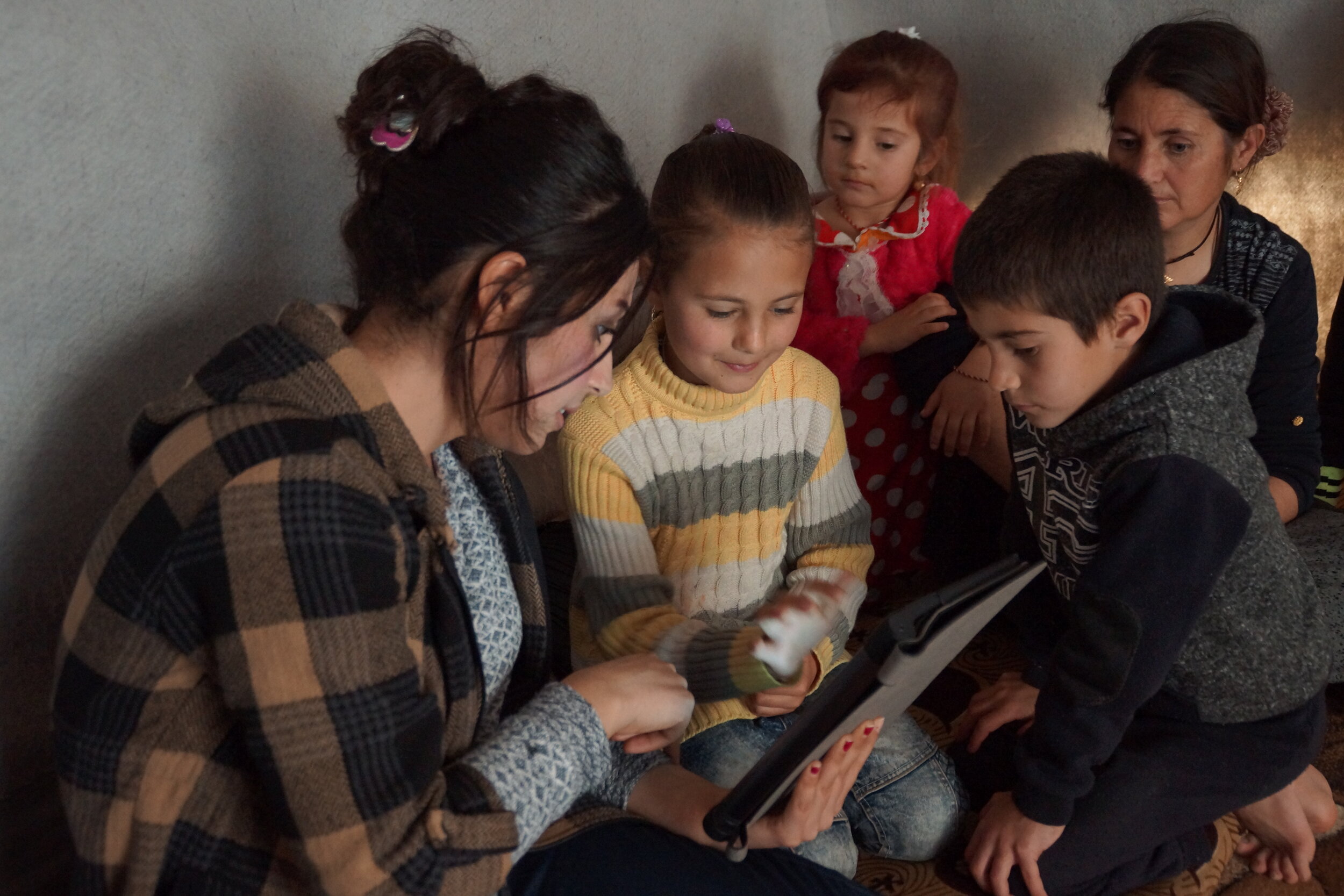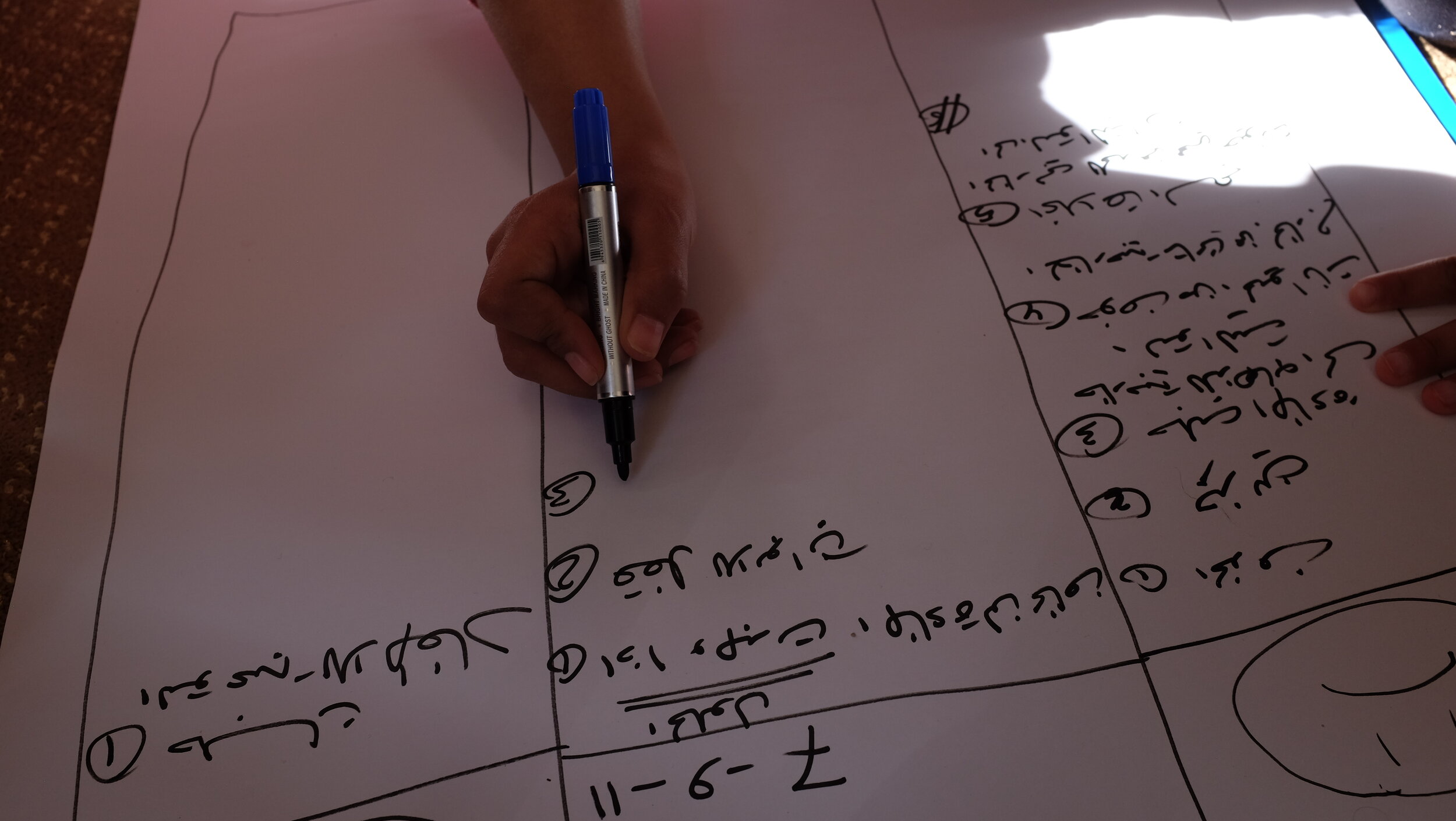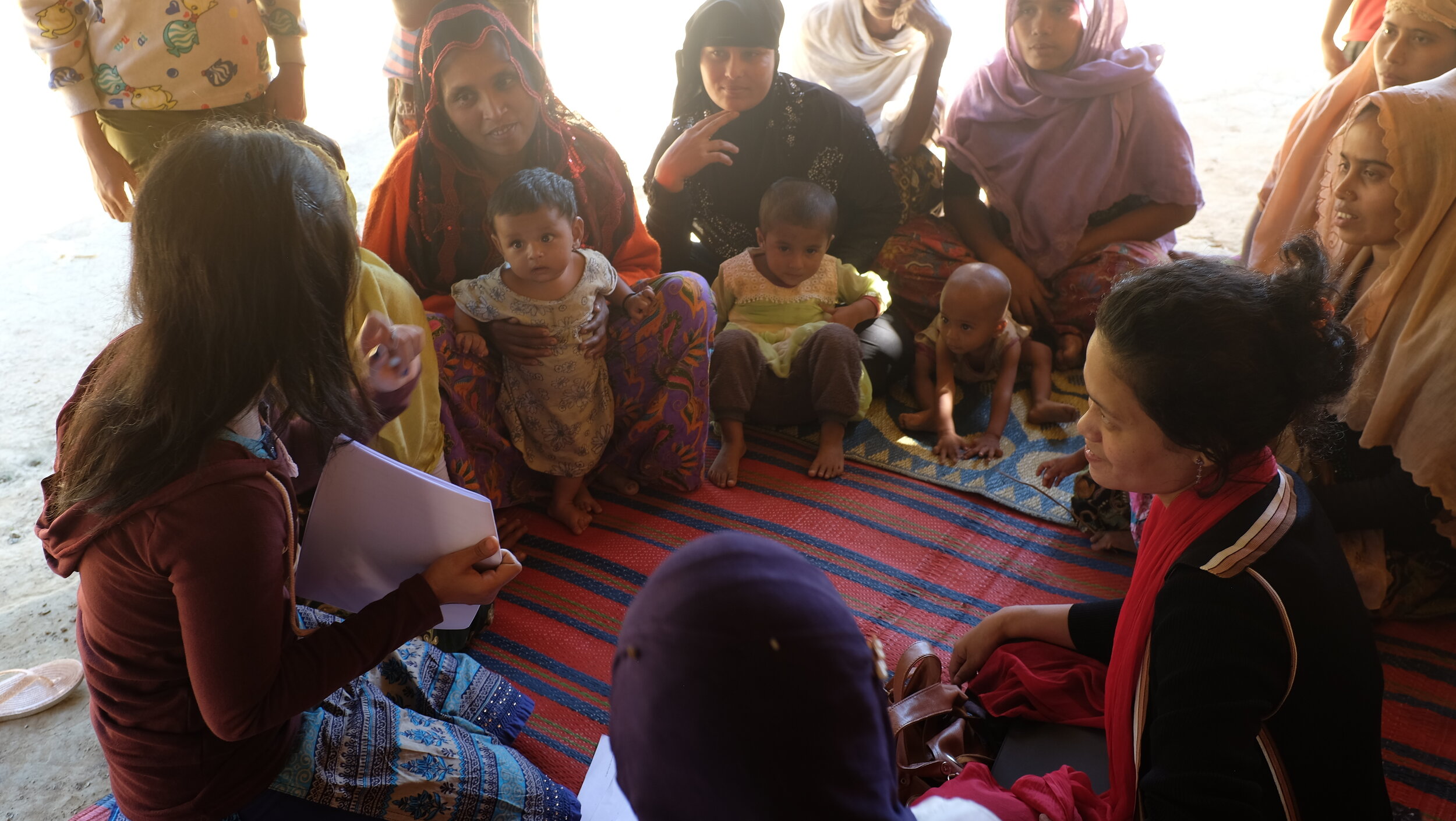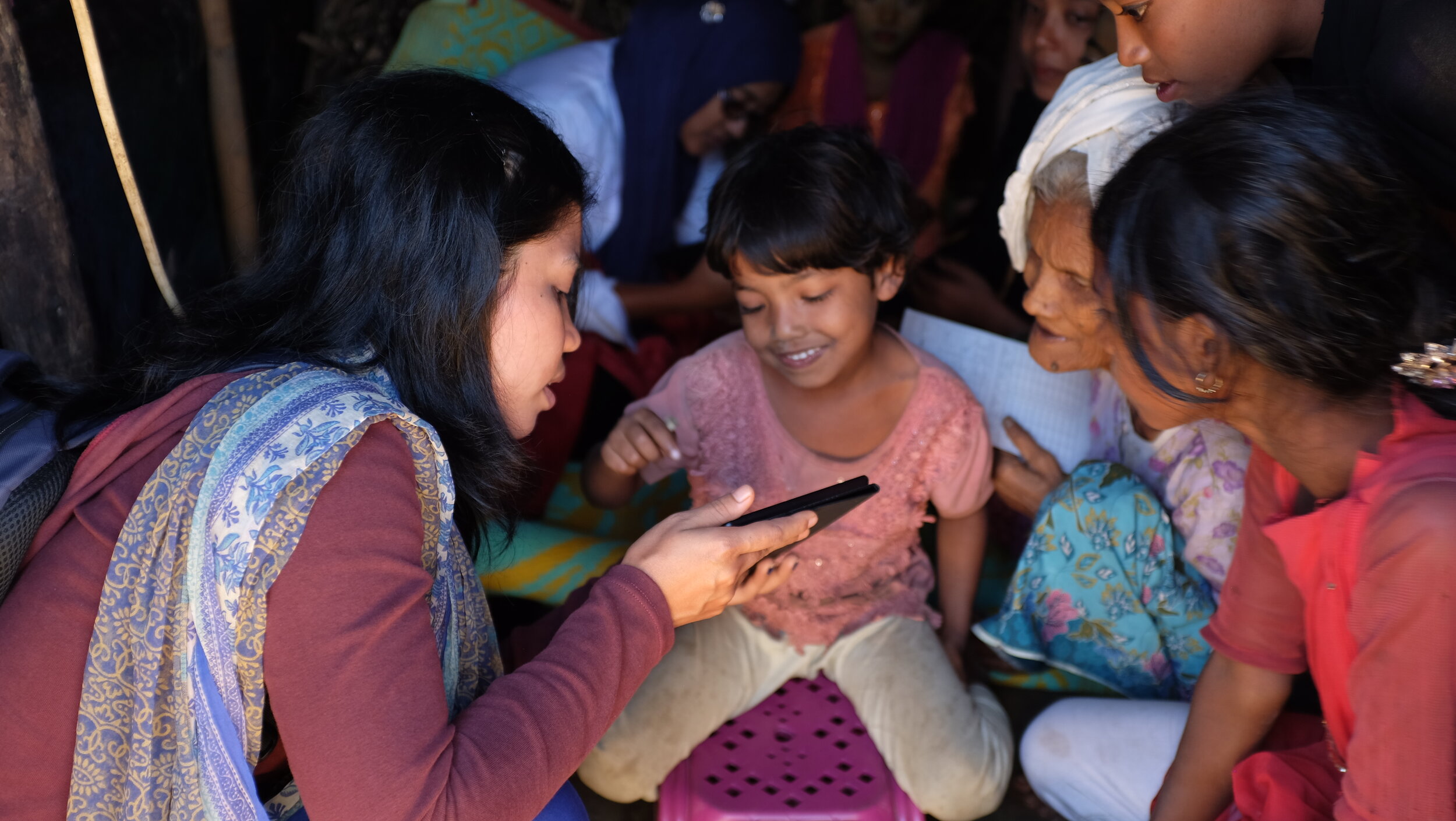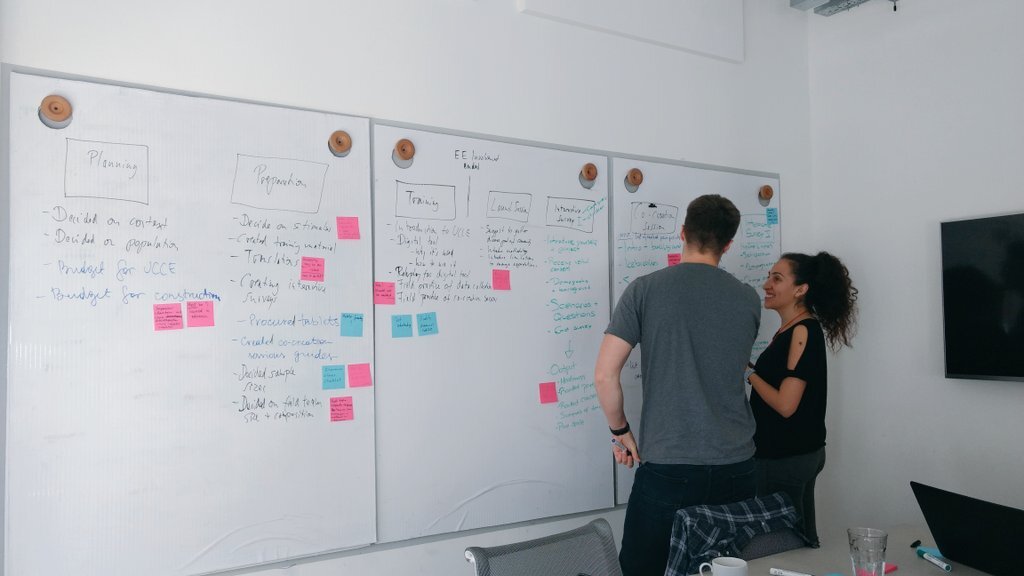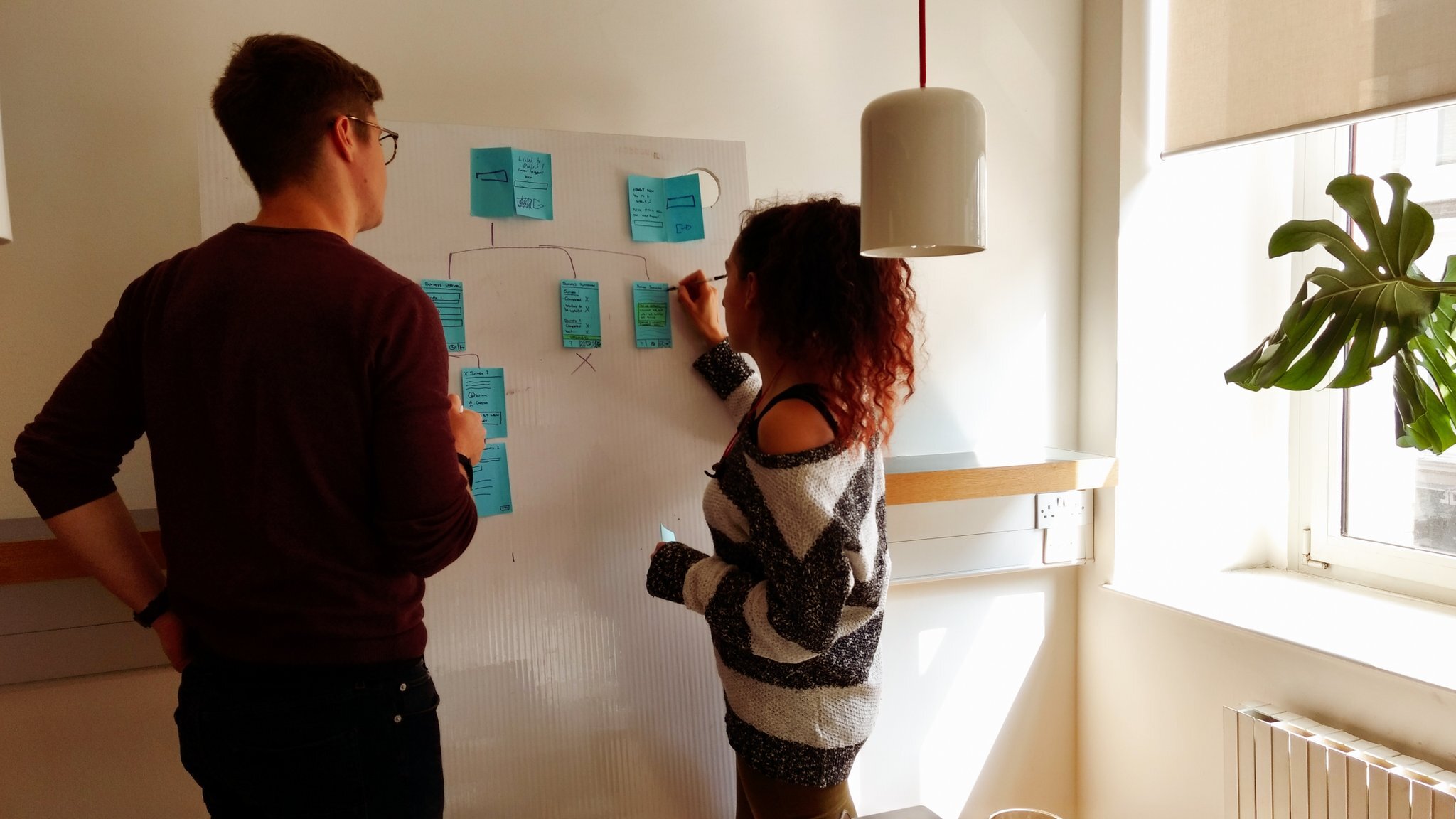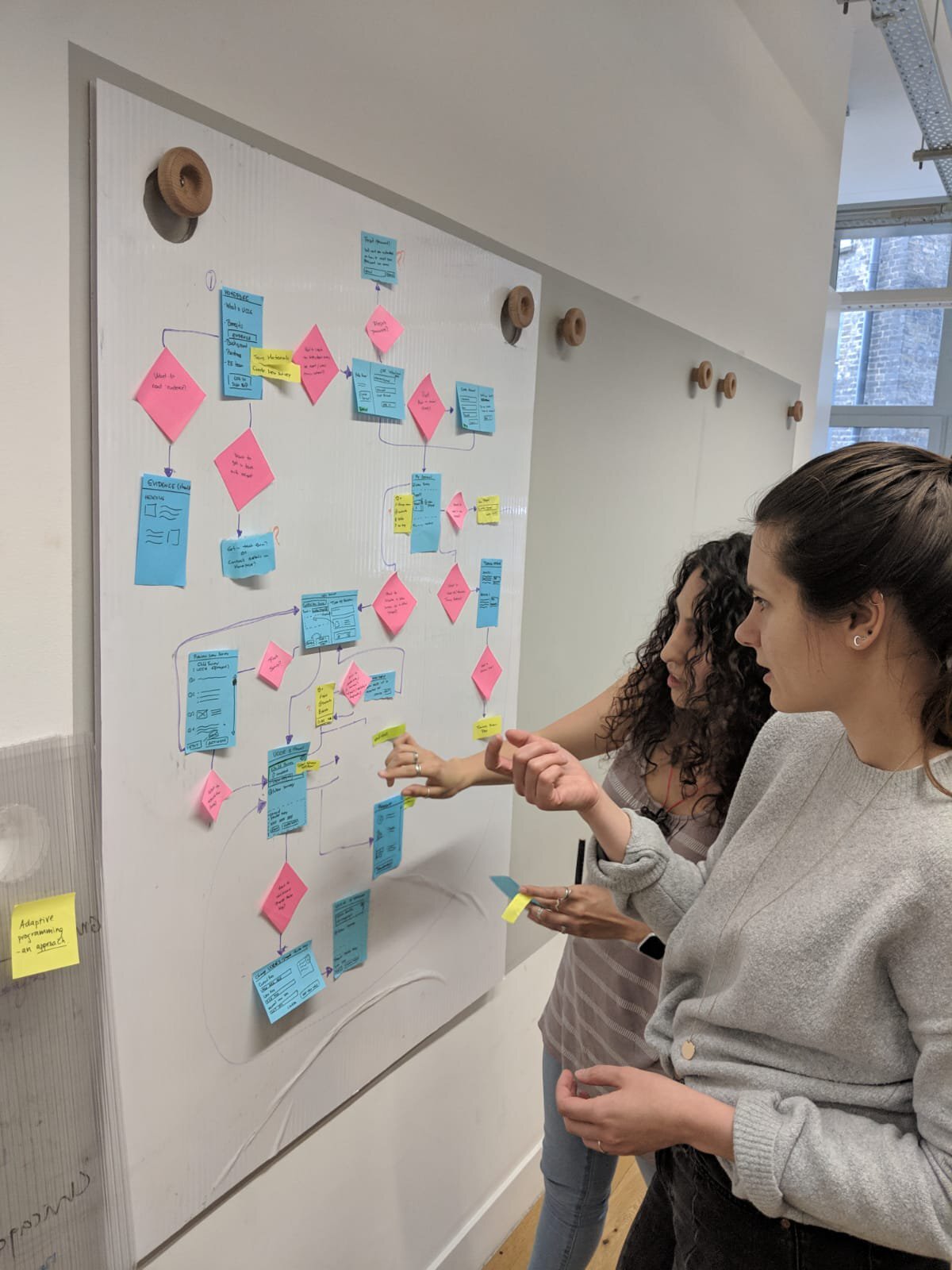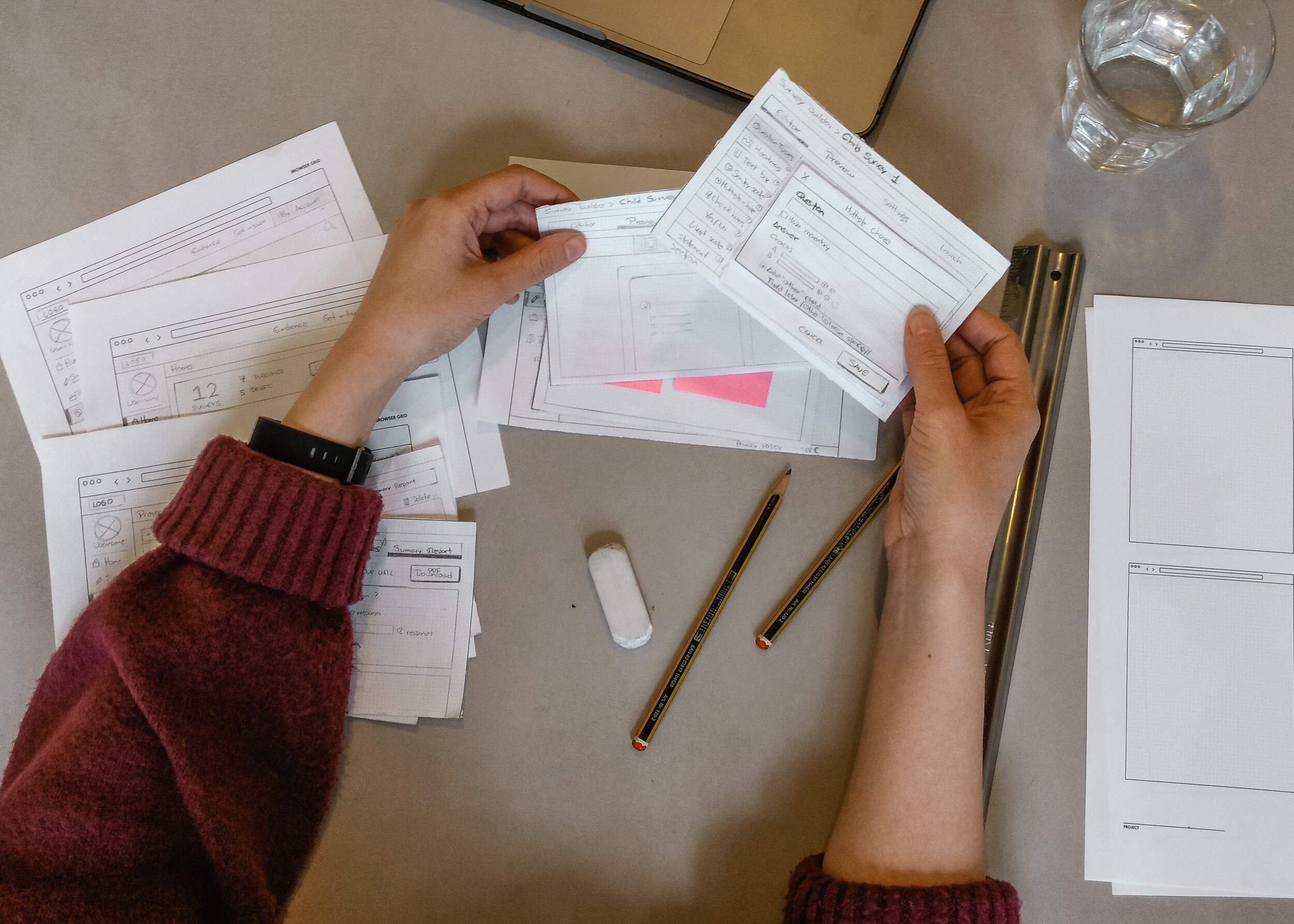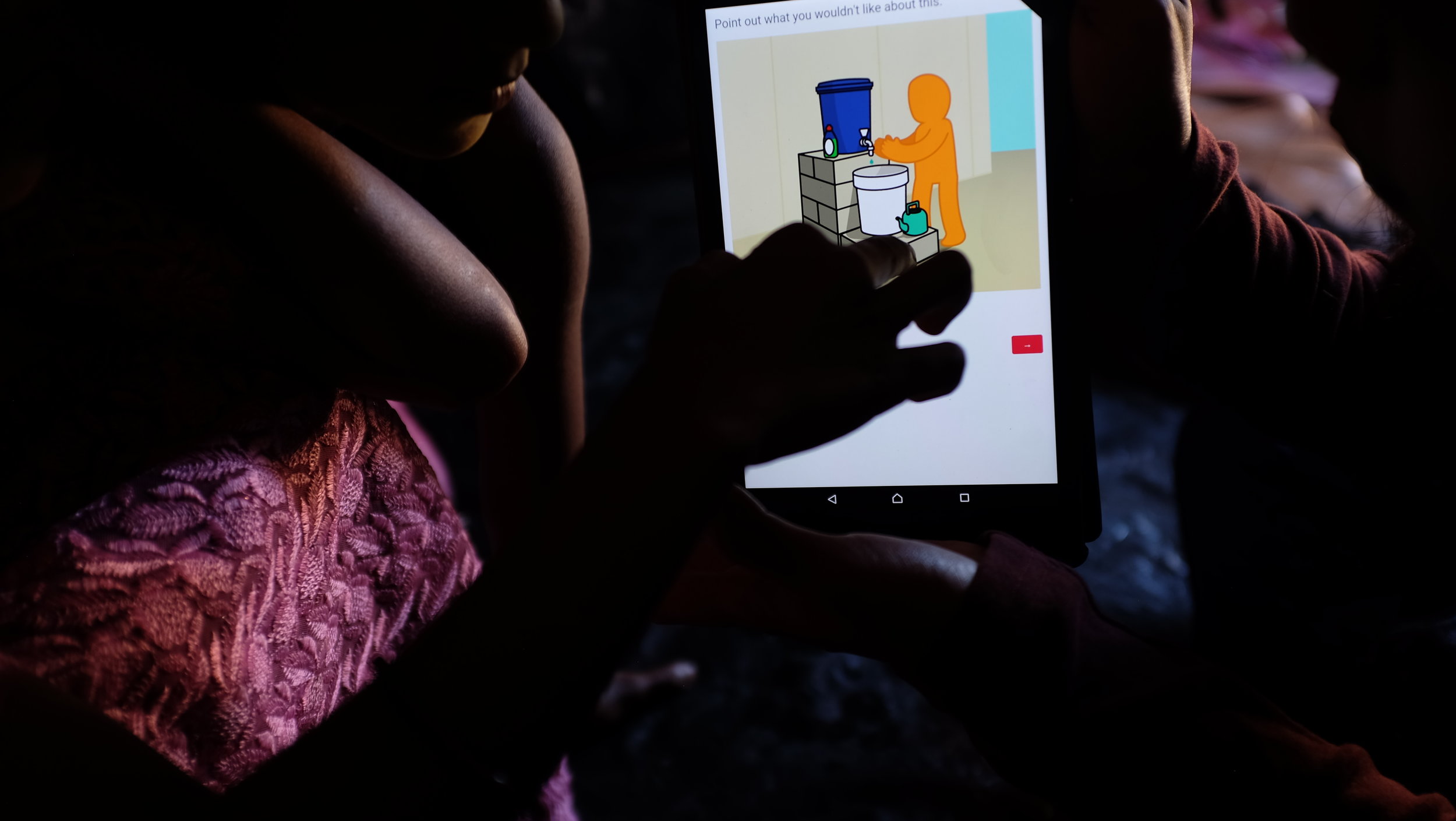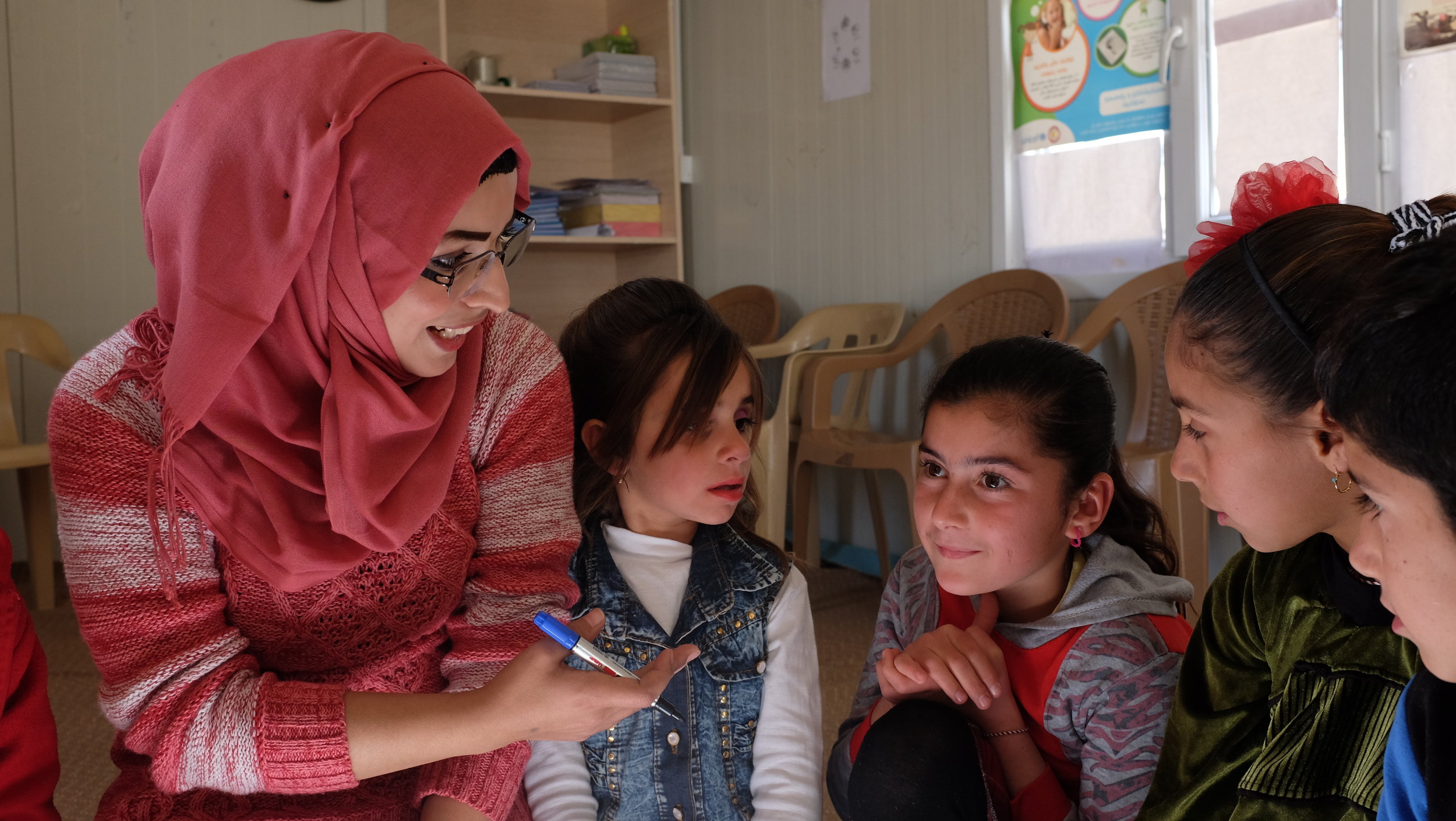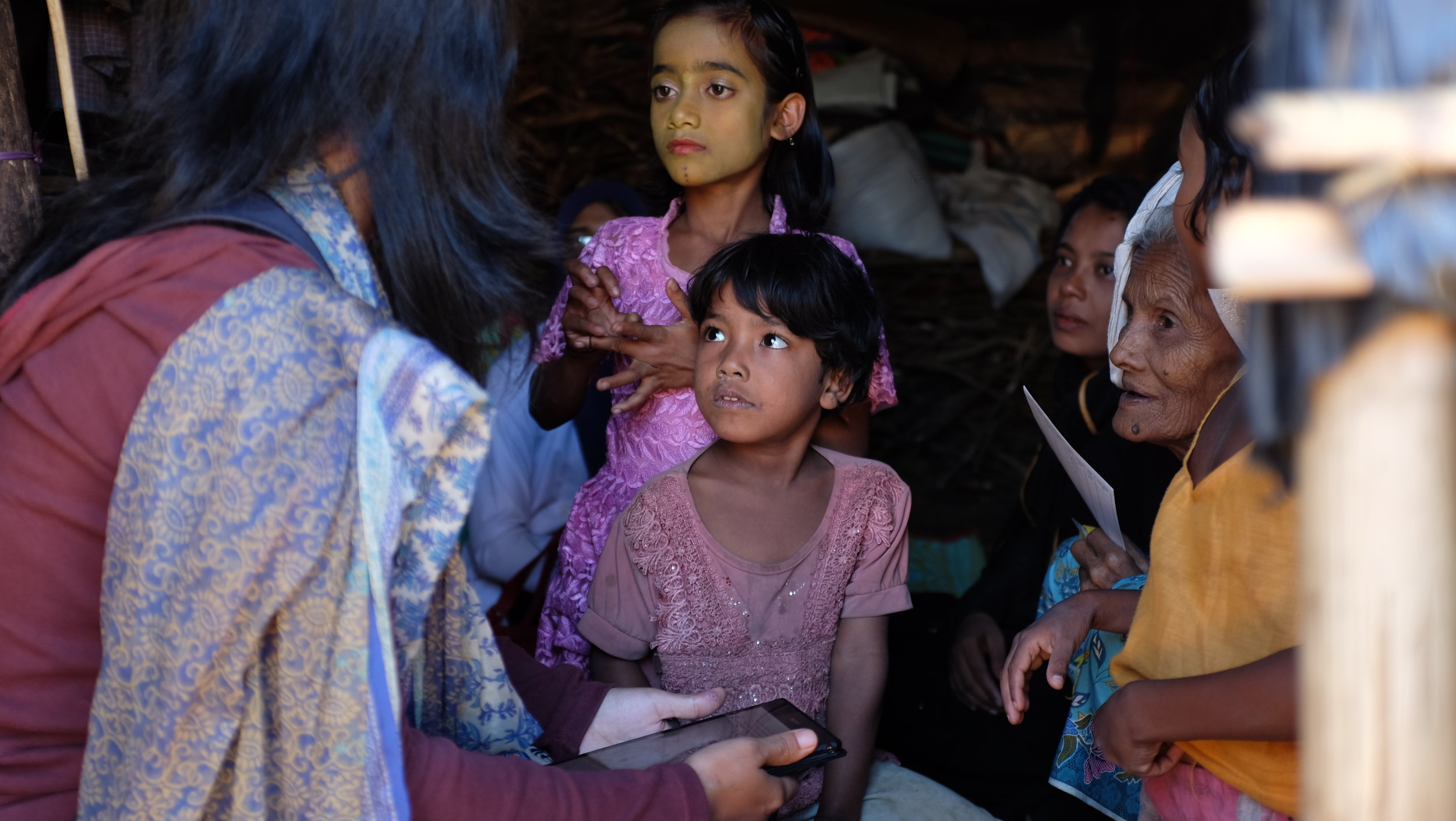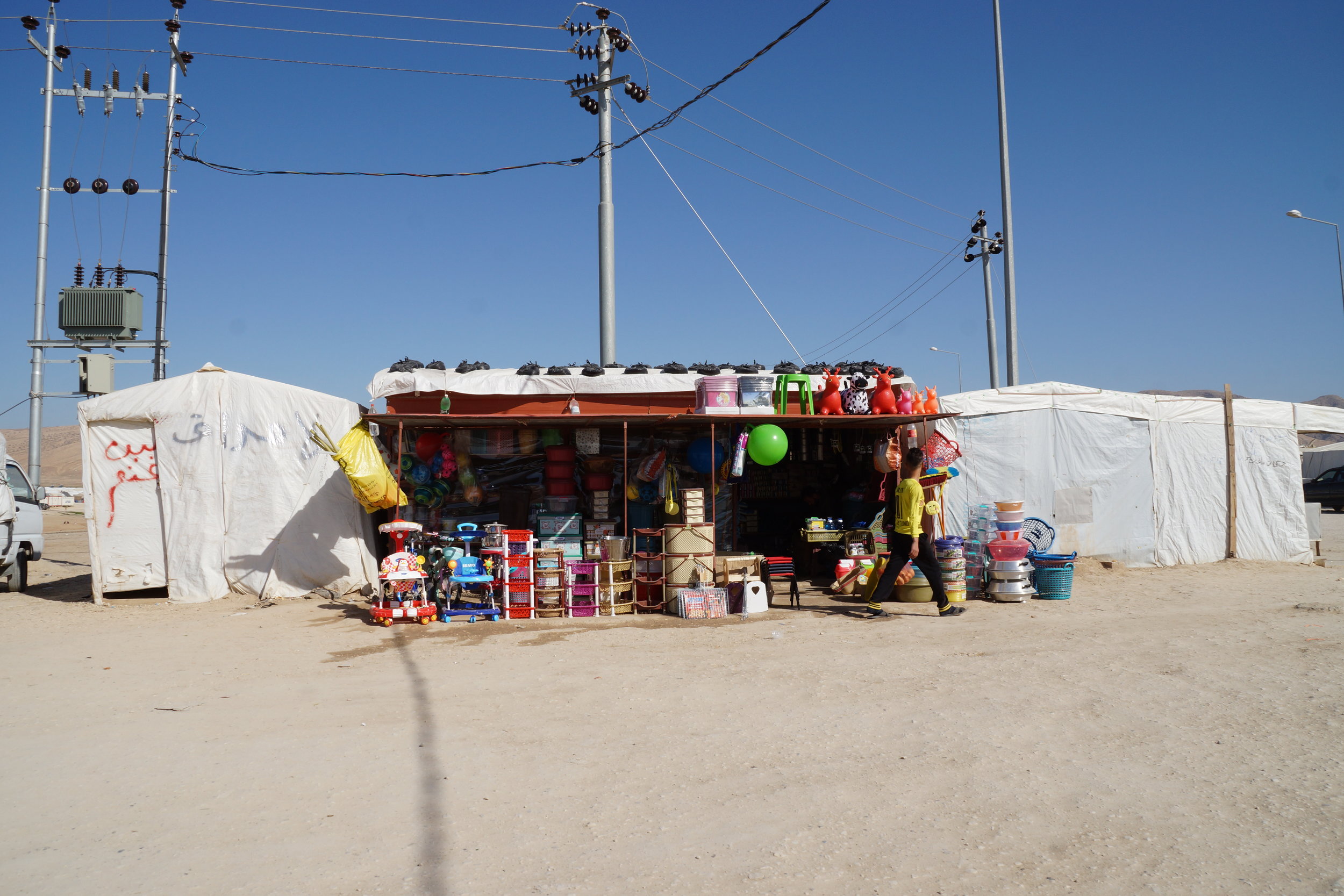This page illustrates how the community engagement methodology was first developed in partnership between Eclipse Experience and Save the Children UK in 2017-18, and how it was refined in 2019 in advance of being piloted in Ethiopia in partnership with both Save the Children UK and Oxfam GB.
How UCCE came about
As a response of the initial WASH Innovation Challenge funded by the HIF, the goal was to design a community engagement methodology that was not only user-centred, but also easy to integrate into current response processes in the early stages (12 weeks) of a humanitarian crisis.
Read about the 12 week process Eclipse followed when developing the community engagement methodology.
Proof of concept
The methodology achieved proof of concept after being piloted in Bangladesh (2017) and Iraq (2018), where UCCE was used by Save the Children staff to engage children aged 5-12 years and their primary caregivers in the design of child-friendly sanitation facilities.
You can read about Eclipse’s learnings from both pilots based on the team’s own observations and experiences and the feedback from the field teams involved in the implementation.
Refining the methodology
After gaining proof of concept, and further funding from the HIF, Eclipse partnered with Save the Children UK and Oxfam GB to further refine the UCCE methodology based on the key learnings from the previous pilots, and develop and build a functional open source prototype of the toolkit.
01 Developing the toolkit
During the first two UCCE pilots, we used a third-party software to support the Interactive Surveys component of the methodology. While this was sufficient to achieve proof of concept, it was not an appropriate solution to support a low-cost, scalable methodology ready for rapid deployment. Therefore, the first step in our scale-up strategy was to build an open-source alternative - a digital toolkit - that supports the implementation of the methodology and ensure that UCCE is rapid, low-cost and simple to adopt.
A list of design requirements was created based on partners needs and feedback, which included:
For the Digital Tool to be able to collect data offline
Heatmaps, as a type of question, to allow for interactivity
Easier survey translation options
A series of user-flows and sitemaps were created to assess, discuss and ensure the toolkit was intuitive and easy to use
Paper prototypes were first used to test some of the design ideas, followed by low and high fidelity clickable prototypes which were shared with the development team, and were continuously iterated based on their feedback.
02 Refining the methodology components
Training Session
As a way to involve the team on the reasoning behind UCCE, a short introduction of the methodology was included in the training session. A more defined timeline was included, with clearer objectives, duration and roles per activity.
Furthermore, hands-on practice exercises on how to conduct surveys using the new Digital Tool was included, as well as guidance on how to access reports and use the survey results to create the materials needed for the Co-Creation Sessions.
Co-Creation Sessions
In the Bangladesh and Iraq pilots, Co-Creation Sessions included activities such as 5 Whys and H-Assessments to explore problem areas in more depth. To refine these sessions, further research was done on children's engagement and alternative activities to be conducted. We also sought to build a stronger, more clear connection between the survey outputs and the problems discussed in the Co-Creation Sessions. As a result, it was decided to replace the previous activities with Problem Trees activities.
Guidance given to field teams around how to prepare and conduct Co-Creation Sessions was also refined. We updated the terminology to make it more clear and concise, and added more step-by-step information for the activities.
Decision-Making Sessions
During the Bangladesh and Iraq pilots, the process in which the field team decided on which ideas to implement was not clearly documented, and therefore, was difficult to assess.
As a way to enable field staff to document their decision-making process in a way that would support closing the feedback loop with the affected community, a Decision-Making Session was added to the methodology process.
Latest pilot
In September 2019 we piloted the developed toolkit and the refined methodology in Ethiopia, and are currently in the process of consolidating findings and implications. You can read about our initial findings here.






